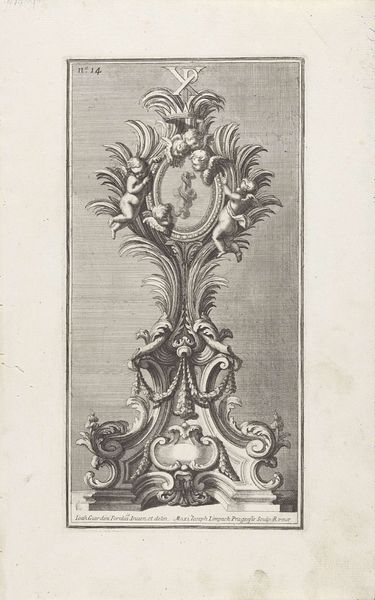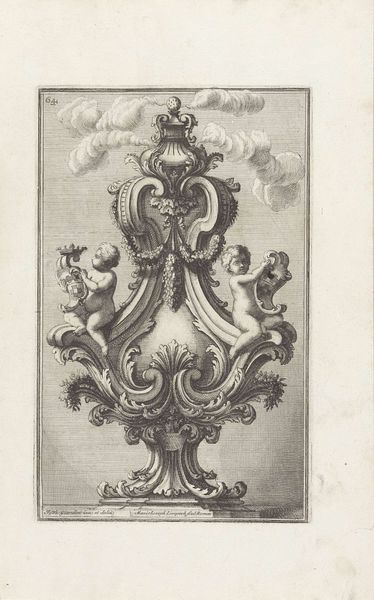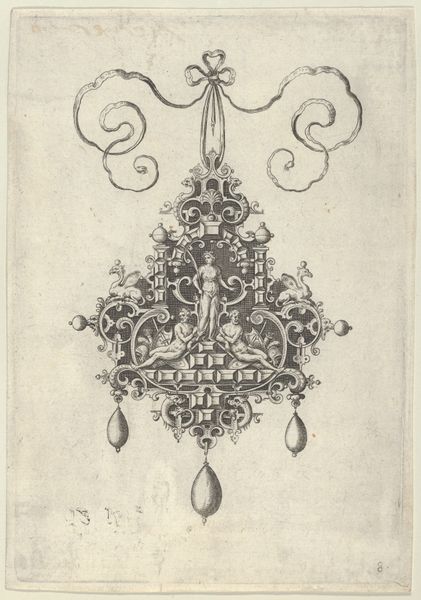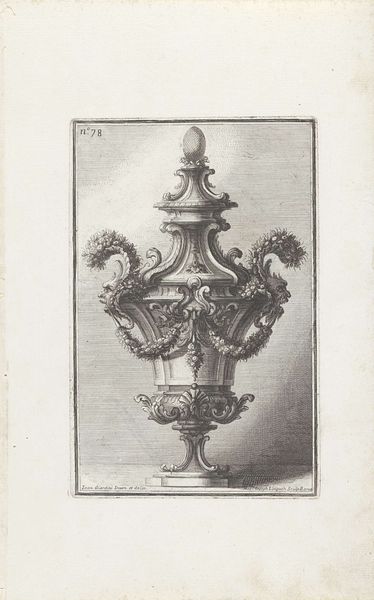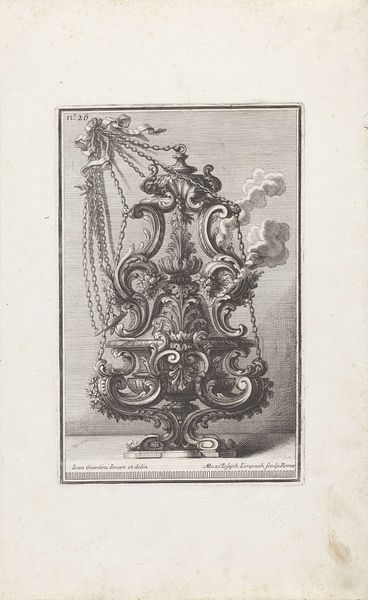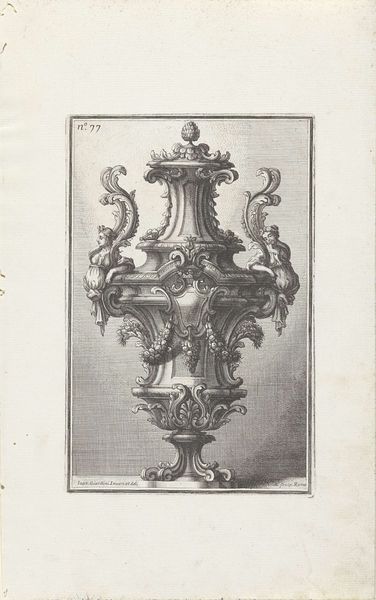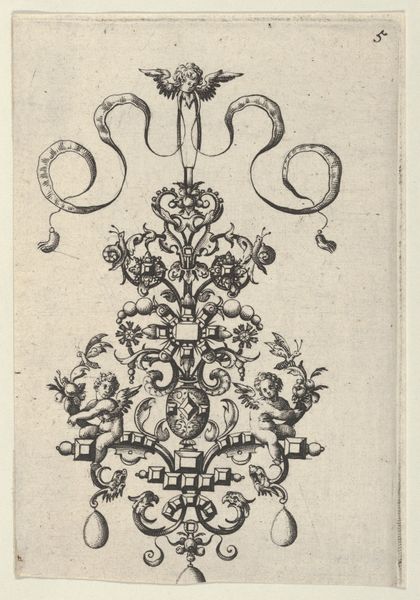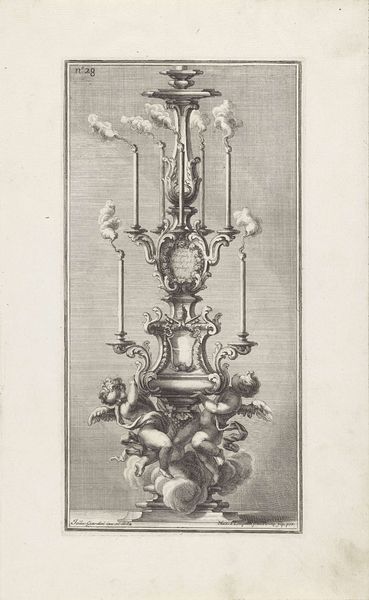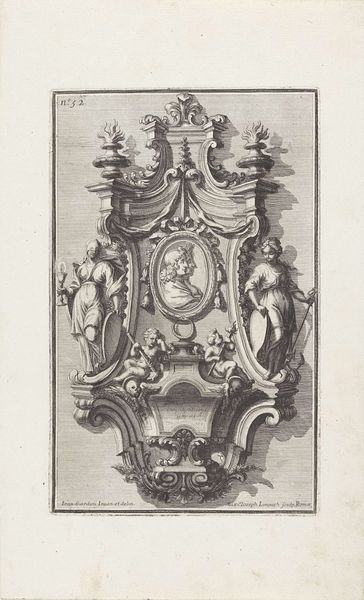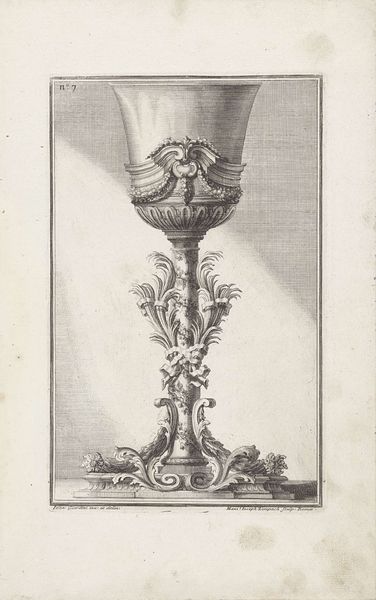
print, engraving
#
baroque
# print
#
old engraving style
#
decorative-art
#
engraving
Dimensions: height 300 mm, width 156 mm
Copyright: Rijks Museum: Open Domain
Curator: Okay, let's dive in. We're looking at a print called "Vaas met krullen, bloemen en vruchten" – that's "Vase with scrolls, flowers, and fruits" – created in 1714 by Maximilian Joseph Limpach, currently housed in the Rijksmuseum. Editor: My first impression? Whoa, it’s intense! I mean, it's so detailed and…ornate. The vase practically explodes with flourishes. All those tiny lines giving the illusion of such a heavy form filled with light…it almost feels alive, bursting forth. Curator: That overwhelming ornamentation really defines the Baroque style. It reflects a time of shifting power dynamics across Europe. Remember, art became a tool for displaying wealth, authority and status. These prints, especially decorative ones like this, would circulate among artisans and patrons, disseminating this aesthetic. The vase isn't just a vase, but a symbol. Editor: Totally! Like, imagine this etched onto a wall in some over-the-top palace. It screams "look how fancy my taste is!" But there’s something kinda humorous about it too. All those scrolls and fruity bits are practically a cartoon. I mean, those cherub faces – slightly disturbing! Curator: Those cherubic faces are key to understanding Baroque sensibilities, which can often juxtapose the sacred with the sensual, all packaged with maximum drama. The print circulated these ideas within the decorative arts, promoting these complex visual cues to embed objects and buildings with powerful connotations for centuries after. Editor: So, it's like…an early version of design blueprints, shaping how people literally constructed status, power, and, I guess, ideas? Kinda makes you wonder about our current blueprints for things. Curator: Exactly. This piece provides insights into the societal aspirations and visual language of the early 18th century and Baroque ideals of beauty. Thinking about how artists engage with similar dynamics of identity, gender, race and politics is why interrogating art’s relationship with societal power matters. Editor: Huh. Well, next time I’m feeling a bit too minimalist, maybe I’ll just gaze upon this bad boy and embrace the glorious, overwhelming, cherub-filled Baroque chaos. It's almost…liberating!
Comments
No comments
Be the first to comment and join the conversation on the ultimate creative platform.

